Racism in the US: a cautionary tale for Switzerland
American Christine Worrell, a Swiss resident, has experienced discrimination in both countries she’s called home. She lays out the origins and manifestations of the problem in both places, arguing that despite their differences, the response must be the same.
The situation in the US
It is easy to look with horror at the killing of George Floyd and systemic racism in the United States and think that these sorts of things could never happen here in Switzerland. It is true that the US has a unique history of slavery that is firmly at the root of the racial divide. But while I would hope that racism could never evolve in Switzerland in the same way as it has in the US, I know that racism is a cancer that if allowed to grow will sicken and weaken a civilized society.
Police brutality
The history of denying African-Americans the protections of the Fourteenth Amendment to the US Constitution, which affords every American due process (or the right to a fair trial) and equal protection under the law, is long. Extra-judicial lynchings of blacks accused of crimes was prevalent in the US after the Civil War and was a form of racial terrorism, designed to keep blacks subjugated and oppressed. Between 1877 and 1950, records show that more than 4,400 black men, women and children were lynched in the US, mostly in southern states. Lynchings were gruesome, often public affairs, where crowds of hundreds of whites would assemble to watch the torture and murder, most often by hanging, of blacks. Modern-day police brutality against blacks as well as vigilante killings of blacks by white citizens claiming to be protecting neighborhoods, such as the killings of Trayvon Martin and Ahmaud Arbery, have their roots in lynching.

More
Racism in Switzerland: An expat’s perspective
The legacy of other forms of racial discrimination in the post-Civil War and Jim Crow era, such as school segregation, housing segregation, and discrimination in employment, continues today.
Education
Despite the landmark 1954 US Supreme Court case, Brown vs. The Board of Education, which made formal segregation of schools illegal, a 2019 study found that over half of US students go to segregated or “racially concentrated” schools where most students are either white or black. This is because many neighborhoods in the US are racially segregated and most children go to their “zoned” school. Also, in the US, schools are funded by local property taxes. So, if you live in a low-income neighborhood, as many black children do, your school is under-funded, with fewer resources and a lower standard of education.
Housing
Many neighborhoods remain segregated because of historic and modern-day discrimination against blacks in housing. Landlords often had policies of not renting to blacks, and restrictive covenants prohibited white home-owners from selling their houses to blacks. So-called “white flight” meant that when blacks did start to move into predominantly white neighborhoods, white neighbors would rush to sell their homes and move, thus depressing property values and ensuring the transition of the neighborhood from majority white to majority black. “Red-lining,” a policy of refusing loans to black communities or offering loans at unfavorable rates, depressed home ownership in the black community. Since a home is most families’ most significant appreciating asset and means of generational transfer of wealth, blacks were extremely disadvantaged by this obstacle to financial advancement.
Employment
Blacks also continue to face discrimination in employment in the US. Blacks earn less on average than their white counterparts with similar credentials. A 2017 study showed that blacks with a high school diploma earned 78.1% of what similarly educated whites earned; blacks with a college degree earned 78.7% of what similarly educated whites earned; and blacks with advanced degrees earned only 81%. In a recent two-year study, identical resumes were sent out to employers, one set with race-identifying information (black-sounding names, affiliations with black organizations) and the other set “whitened” with white-sounding names and affiliations or activities indicating an identification with white culture. The “whitened” resumes received calls at a rate of 25%, and the “black” resumes received calls at a rate of 10%.
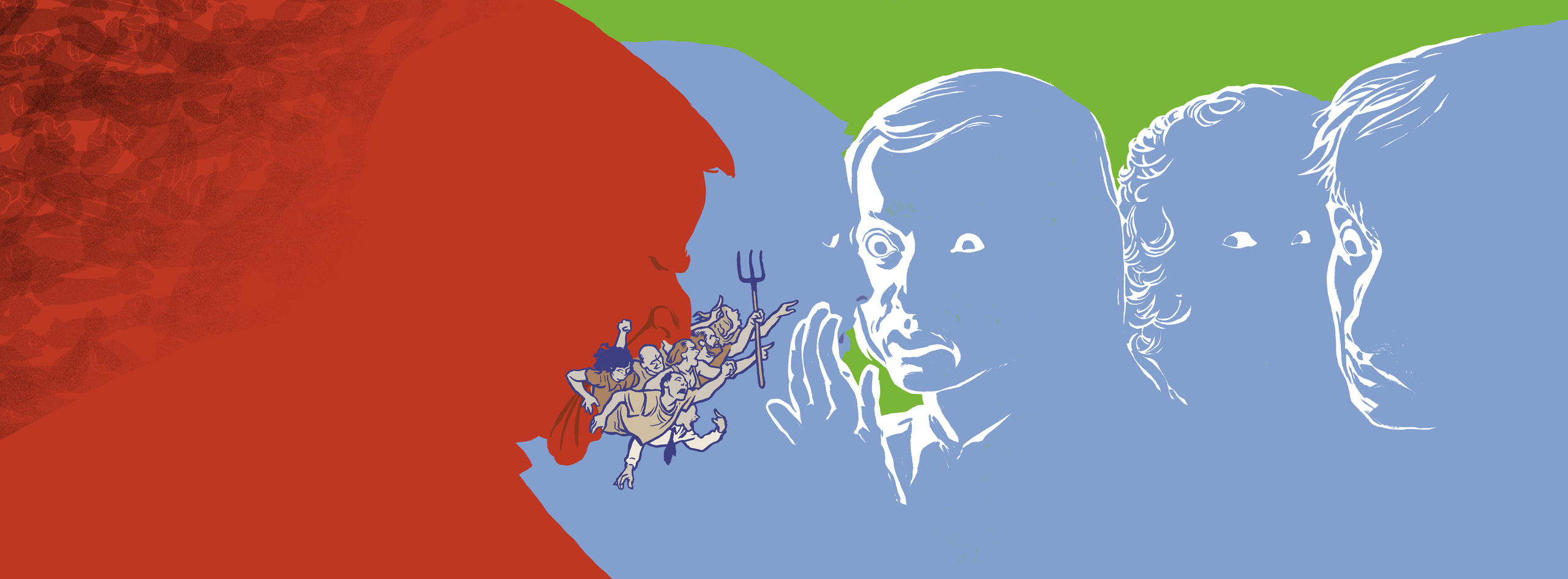
More
Switzerland as a test case for European populism
When you add to all these factors yet another police killing of an unarmed black man by lengthy strangulation in broad daylight, with onlookers begging the police to stop, all captured on video, it becomes understandable why the Black Lives Matter movement exists and why thousands have taken to the streets in protest. It is unfortunate that a small minority of protestors have turned to violence, but as Martin Luther King, Jr. famously said, “A riot is the language of the unheard.” Even more so than during the Civil Rights Movement of the 1960s, this time white citizens are joining with their black fellow citizens to protest and demand change. In addition, people around the globe are adding their voices to the cry for an end to racism. I remain hopeful that in unity there is strength and that the current protest movement will bring real change in America and around the world.
The situation in Switzerland
While the population of blacks and people of color is obviously much smaller than in the US or other European countries, such as France or the United Kingdom, according to the Swiss Federal Statistical Office, as of 2015, there were 93,814 foreign nationals from Africa living in Switzerland – just over 1% of the population. This statistic of course does not take into account blacks and other people of color from other parts of the world. Also, as of 2015, about 25% of the Swiss population was made up of foreign nationals. While Switzerland keeps statistics on foreign nationals, it does not often break down such data with respect to race.
Police brutality
In a 2017 report on Switzerland, the United Nations’ Human Rights Committee concluded that it remained “concerned about reports of the prevalence of police brutality, especially against asylum seekers, migrants and foreigners and about the underreporting of such incidents”. It further called on Switzerland to establish an independent body to review, investigate and keep statistics on complaints of police brutality.
Education
The 2018 Report of the Service for Combating Racism (SCRA), a division of the Federal Department of Home Affairs, found that young foreign nationals are significantly less likely than their Swiss national counterparts to gain immediate entry to upper-secondary level education. Young foreign nationals born abroad complete upper-secondary education at a rate of just 73%, and young foreign nationals born in Switzerland at a rate of 86%, while for Swiss nationals the equivalent rate is 94%. Students with a migrant background account for a mere 10% of the student population in Swiss higher-education institutions. The report concludes that “[i]ndividuals without a post-compulsory education cannot make up the education gap between them and people with higher qualifications over their working life, no matter how lengthy. The inequalities in the school system thus have a knock-on effect on a person’s entire future career.”

More
How Switzerland became Switzerland: the main chapters of the country’s history up to 1848
The report further noted that statistical data “shows an increasing tendency towards racial discrimination in schools and education establishments” and a steady rise in the number of discrimination cases reported at advice centers, noting that the data is under-representative, since many cases go unreported and when reported rarely lead to legal action.
Housing
A 2018 study published by the Federal Housing Office (FHO) showed that “ethnic discrimination is a reality in the Swiss housing market.” In an experiment similar to the resume experiment in the US, two fictitious viewing requests were sent in response to online ads for rental properties. In one request, the names clearly indicated that the applicants came from Switzerland, in the other the names indicated applicants from Turkey or Kosovo. The results of the experiment showed that people with a Kosovar or Turkish name have a much lower chance of being invited to view a property, regardless of whether they are a Swiss permanent resident or passport holder.
The SCRA report found that people are sometimes refused housing or evicted based on discriminatory criteria and that housing ads sometimes seek to exclude certain groups based on nationality, residence status, skin color or religion. It also found that such methods of exclusion, in addition to violating the rights of individuals, have an impact on neighborhood development. “Segregation in urban neighborhoods and the uneven distribution of socio-economic population characteristics between the regions and greater urban areas in Switzerland only serve to concentrate the problems in certain neighborhoods,” the report says. “People from a migrant background are more likely to live in noisy neighborhoods, pay higher rent and live in smaller spaces than those with Swiss backgrounds.”
Employment
Discrimination in employment is the most frequently-reported type of discrimination in Switzerland, and it is a trend that is rising, according to the SCRA report. Types of discrimination include unfair treatment in hiring, marginalization, bullying and other expressions of prejudice.
Again, similar to the US resume experiment, a study by the National Centre of Competence in Research, which analyzes migration and mobility in Switzerland, found that job applicants with foreign-sounding names had to submit 30% more applications than Swiss to be granted an interview, even when their qualifications were the same.
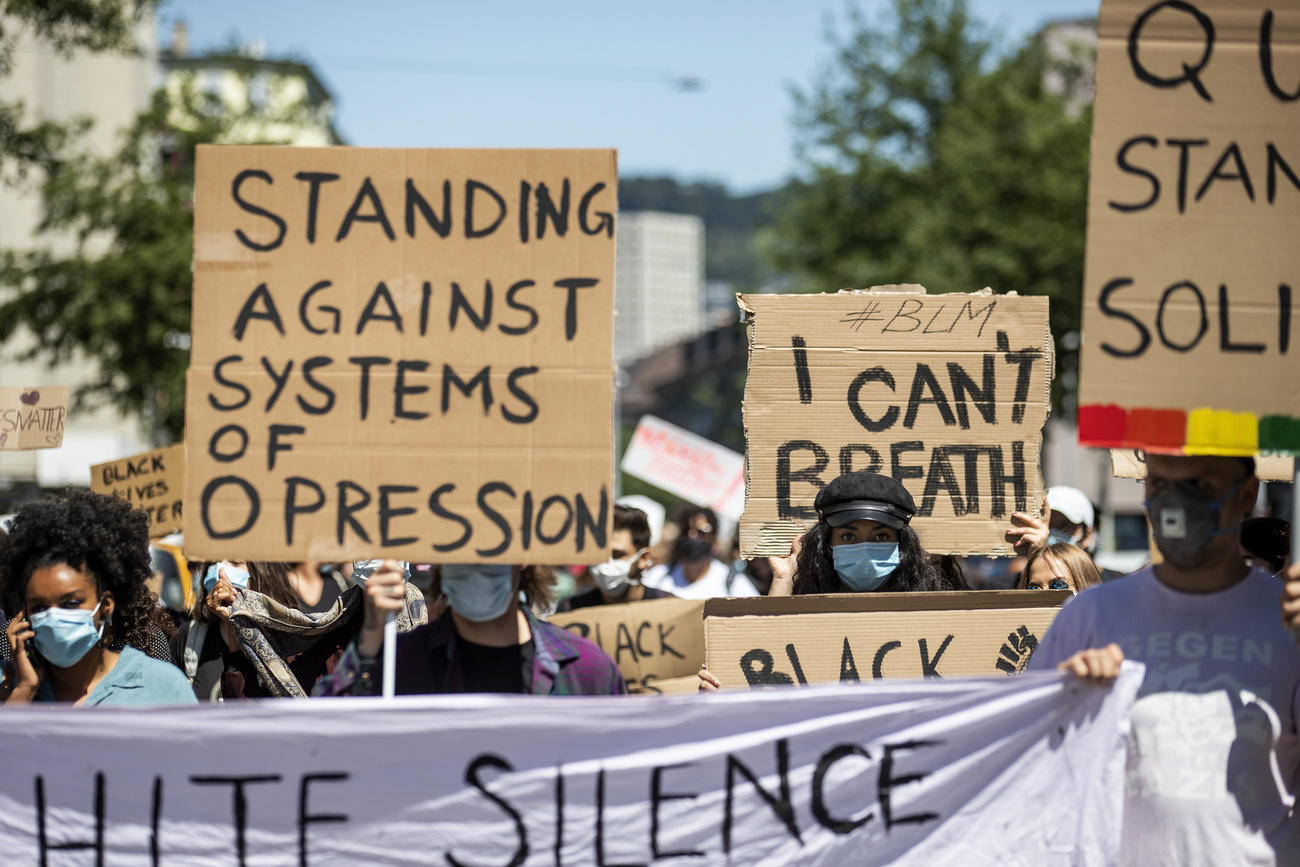
More
Is racism a problem in Switzerland? A look at the latest numbers
The SCRA report stated that in 2017 the unemployment rate for first-generation immigrants and people with a migrant background was 8%, compared with 3% for Swiss nationals. Some 20% of first-generation immigrants with a tertiary qualification were employed in jobs for which they were over-qualified, compared to 10% for Swiss nationals. And in 2016, the median monthly wage for workers who are Swiss nationals was almost CHF 1,000 ($1,057) higher than that for foreign workers (CHF6,808 versus CHF 5,893).
Switzerland should look to the US as a negative example of how to handle the increasing diversity of its population. Racism and discrimination breed discord and hatred that can tear a society apart. As much as possible should be done to educate people about the existence of racism because a problem must first be acknowledged before it can be addressed. To this end, more detailed statistical data should be recorded to understand better the sub-groups of “foreign nationals” and those with “migrant backgrounds” and the differences in their treatment. The government should encourage cross-cultural communication and integration to eradicate the culture of “other.” Segregation leads to lack of understanding, lack of empathy and mistrust on both sides of the cultural divide, as well as poor socio-economic outcomes for the isolated group. Discrimination should not be tolerated and mechanisms should be put in place to more aggressively identify and redress discrimination in education, housing and employment. Finally, violence and abuse of power by those in a position of authority cannot go unexamined and unchecked in a truly civilized society.

More
Newsletters

In compliance with the JTI standards
More: SWI swissinfo.ch certified by the Journalism Trust Initiative
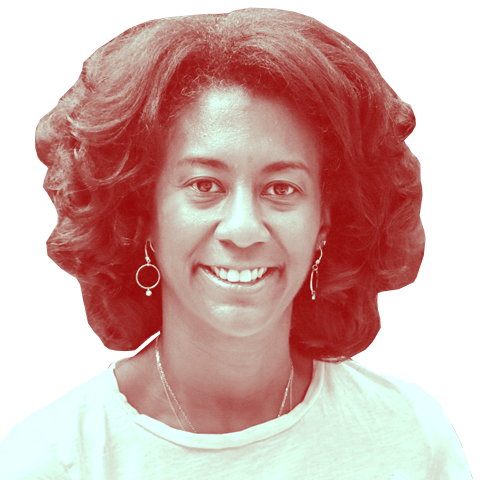
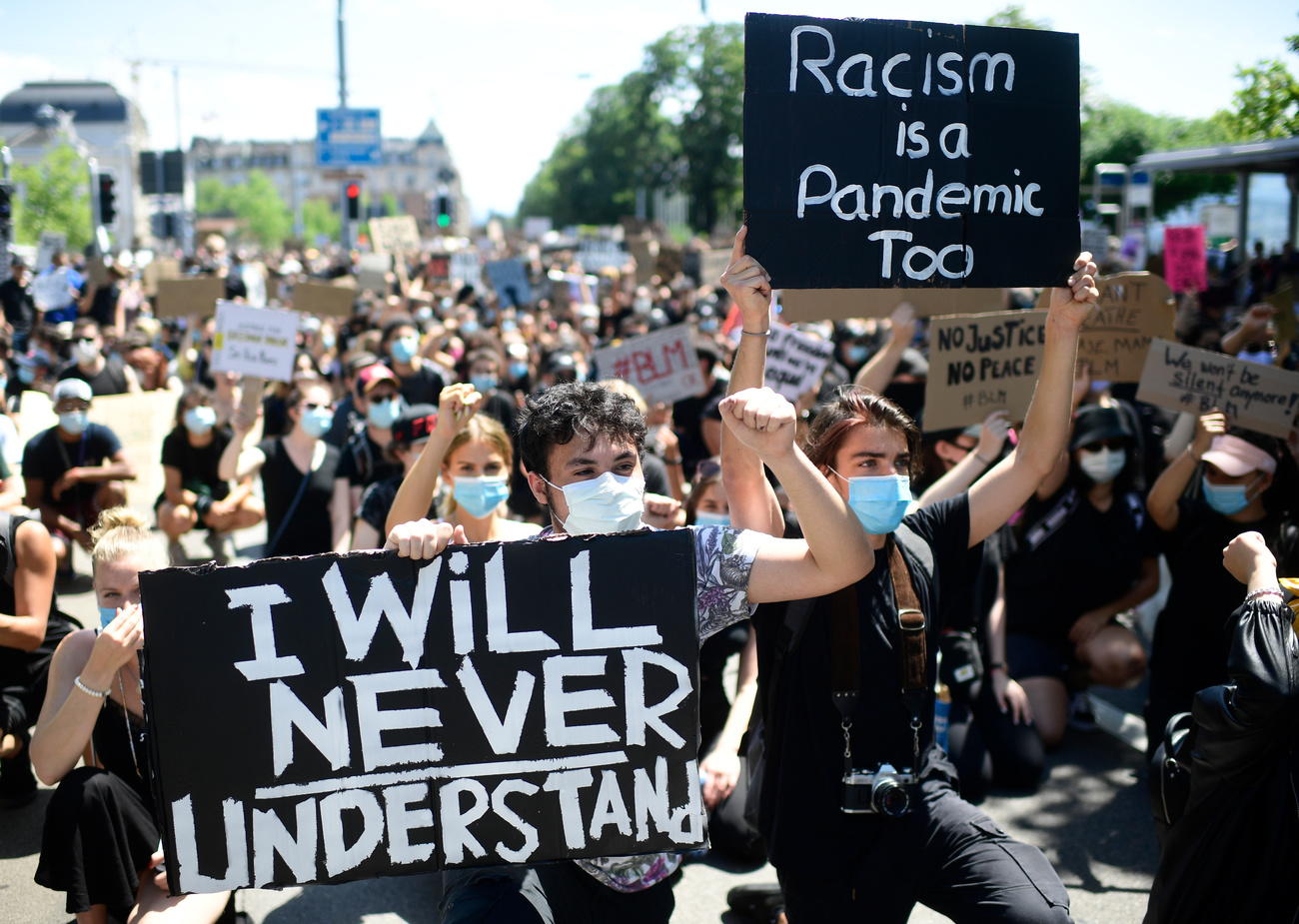

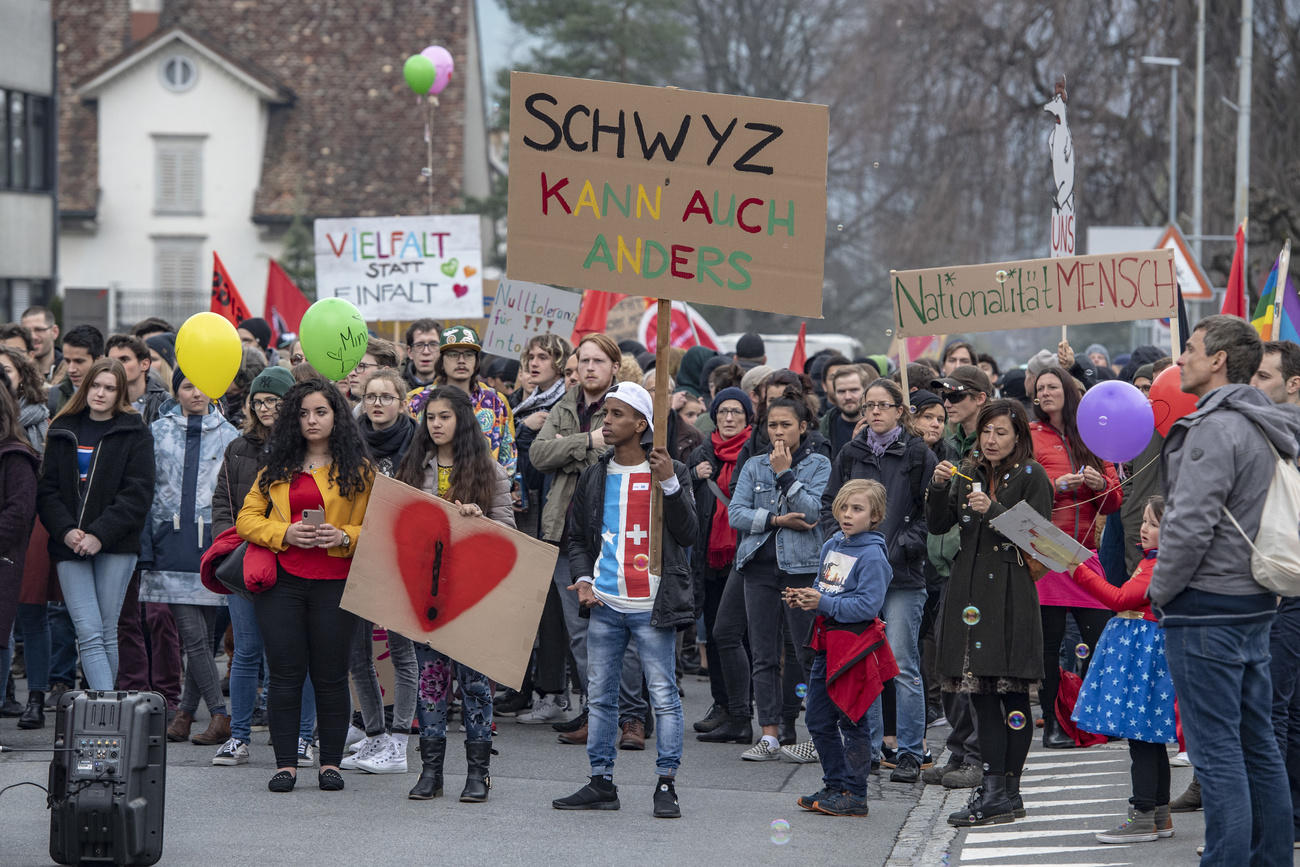

You can find an overview of ongoing debates with our journalists here. Please join us!
If you want to start a conversation about a topic raised in this article or want to report factual errors, email us at english@swissinfo.ch.